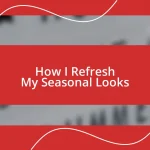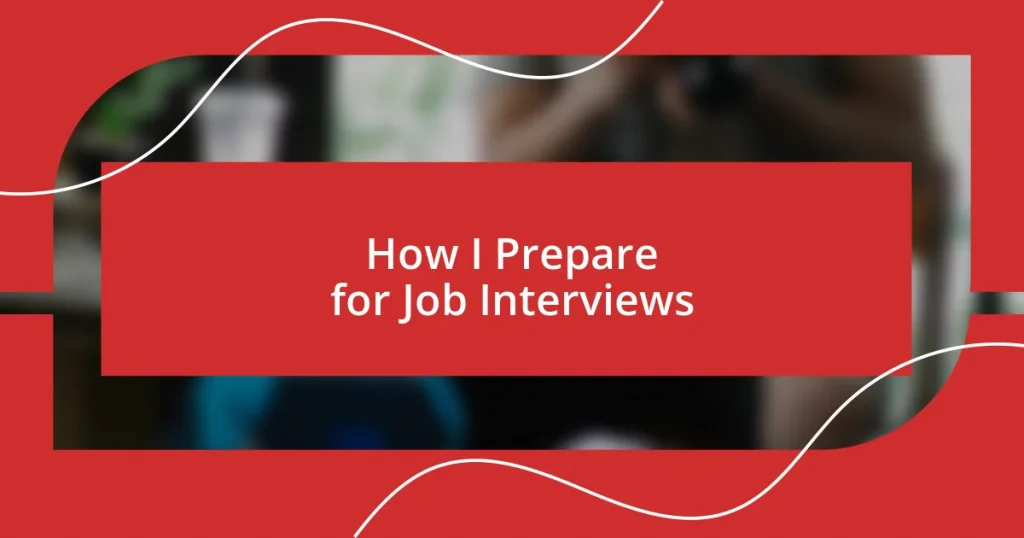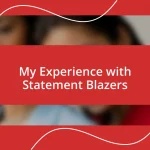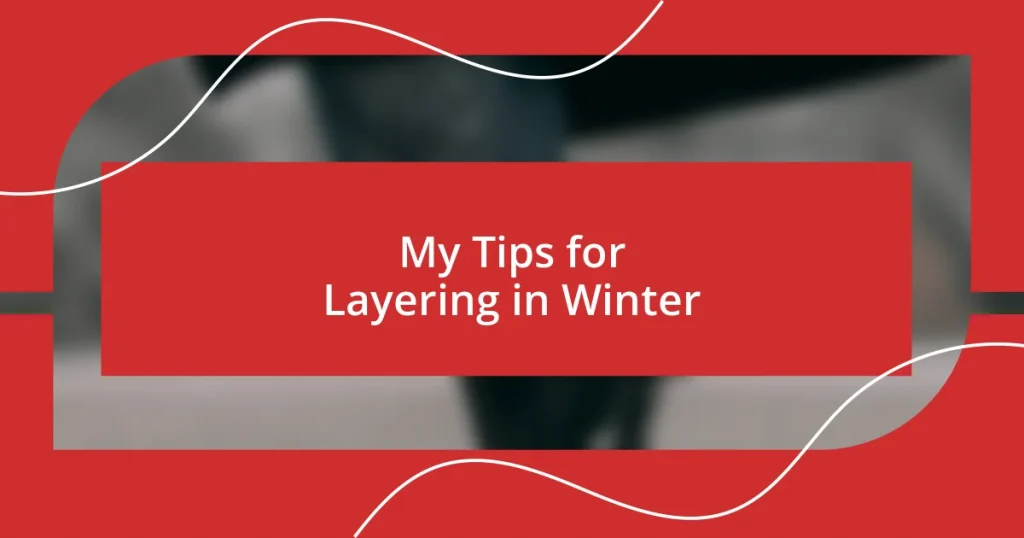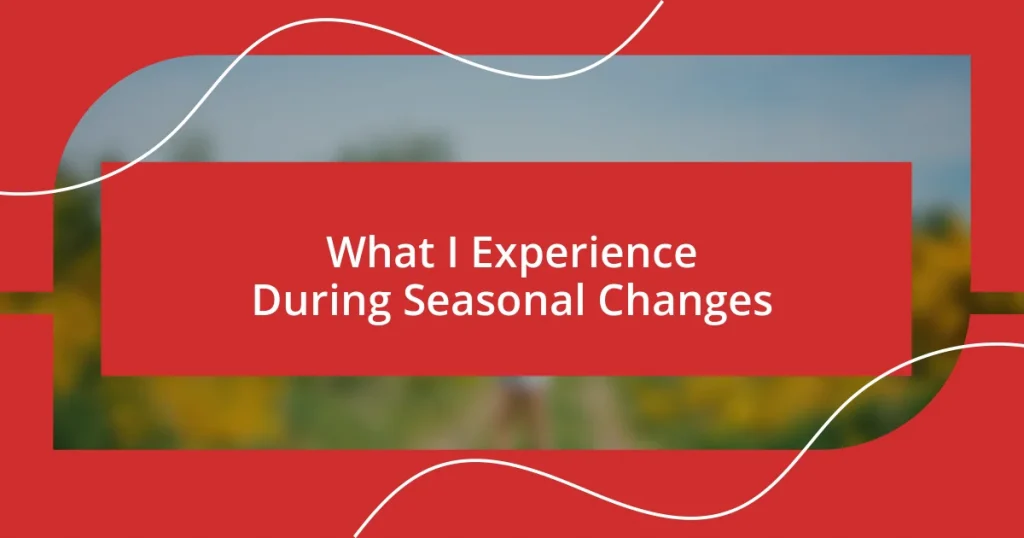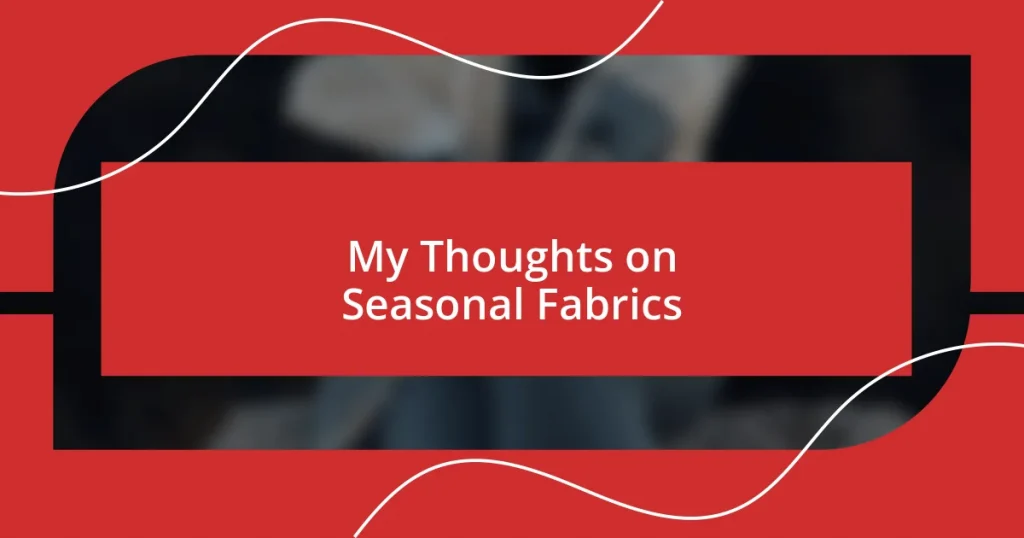Key takeaways:
- Thorough preparation, including research on the company and role, enhances confidence and allows for meaningful conversations during interviews.
- Practicing common interview questions and preparing personal stories using the “STAR” method helps articulate skills and experiences effectively.
- Following up after the interview with a thoughtful thank-you email reinforces interest and can establish a memorable rapport with the hiring manager.
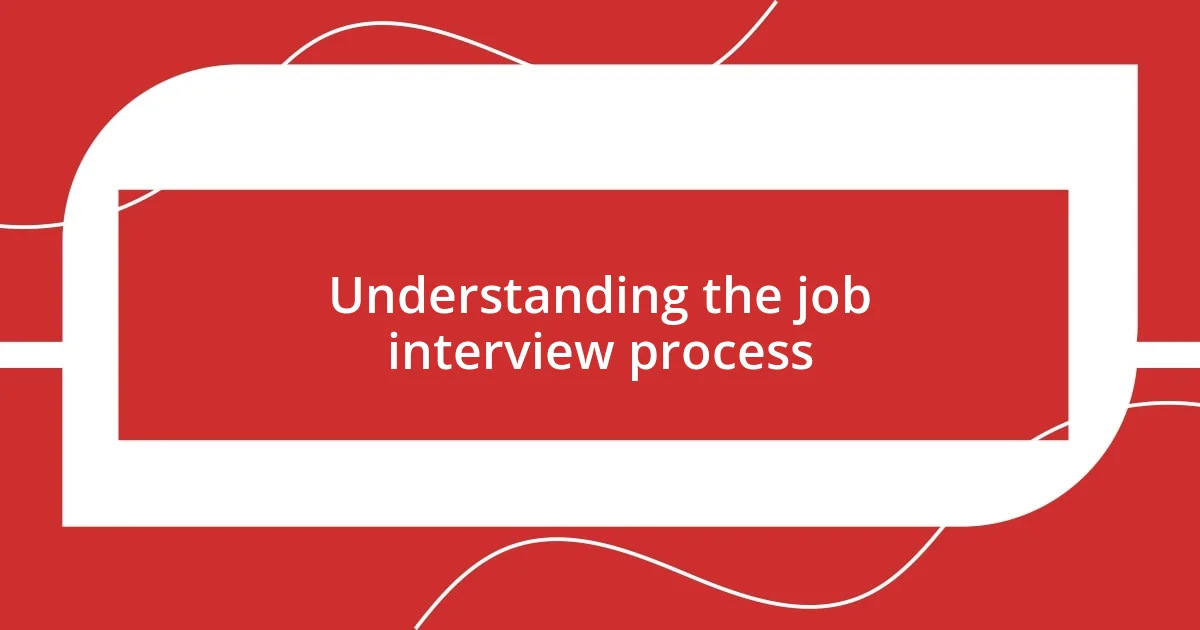
Understanding the job interview process
Understanding the job interview process is essential for anyone looking to secure a position in their desired field. When I reflect on my own experiences, I remember those first few interviews felt like diving into the deep end without a life jacket. How could I possibly answer questions about my strengths and weaknesses without sounding too cocky or too self-deprecating?
The job interview process typically unfolds in multiple stages, starting with screening calls, followed by in-person interviews, and possibly culminating in final rounds with higher-ups. I still recall a time when I breezed through the initial screening only to get tripped up by tough questions during the face-to-face meeting. Did I really convey my passion for the role, or did I just focus too much on my qualifications? That moment reminded me that engaging with the interviewer and showcasing my personality is just as important as my skills.
Each interview is unique, influenced by company culture and the specific role’s demands. For instance, I once walked into an interview for a creative position and realized they wanted to see my portfolio’s actual impact on previous projects. Has this ever happened to you? Learning to tailor my presentations based on the interview context has significantly improved my confidence and outcomes.
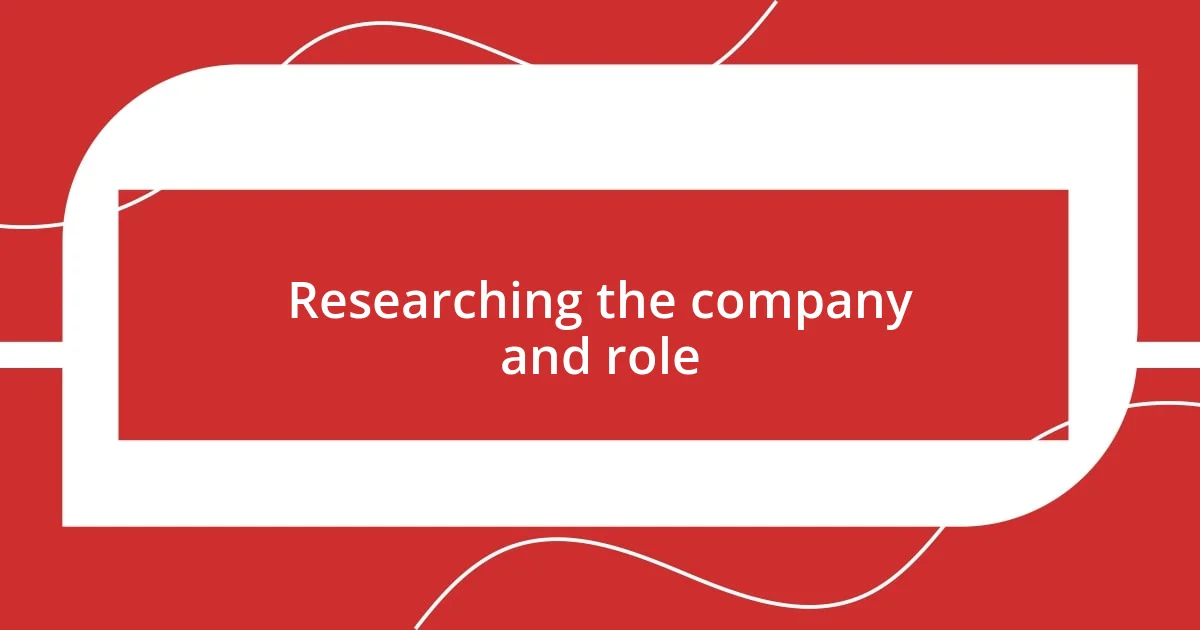
Researching the company and role
Researching the company and understanding the role is an absolute game changer for me. Every time I dive deep into a company’s mission, values, and recent achievements, I feel more connected to the interview process. I recall preparing for an interview at a tech startup—I spent hours sifting through their website and reading customer reviews. This not only gave me insights into their culture but equipped me with specific examples to discuss how my work could contribute to their goals.
Here’s a concise checklist of key areas to focus on when researching:
- Company Background: Understand the company’s history, mission statement, and core values.
- Recent News: Look for recent press releases or news articles to identify current projects or challenges the company faces.
- Industry Position: Analyze the company’s competitors to grasp its standing in the marketplace.
- Role Specifics: Study the job description in detail to pinpoint what skills or experiences they value the most.
- Culture Insights: Explore employee reviews on sites like Glassdoor to get a feel for the workplace environment.
This thorough prep not only creates a sense of familiarity but often sparks genuine conversation during interviews. I remember one time sharing my excitement about their latest product launch, and it instantly connected me with the interviewers. It’s those little moments that can make a big difference!
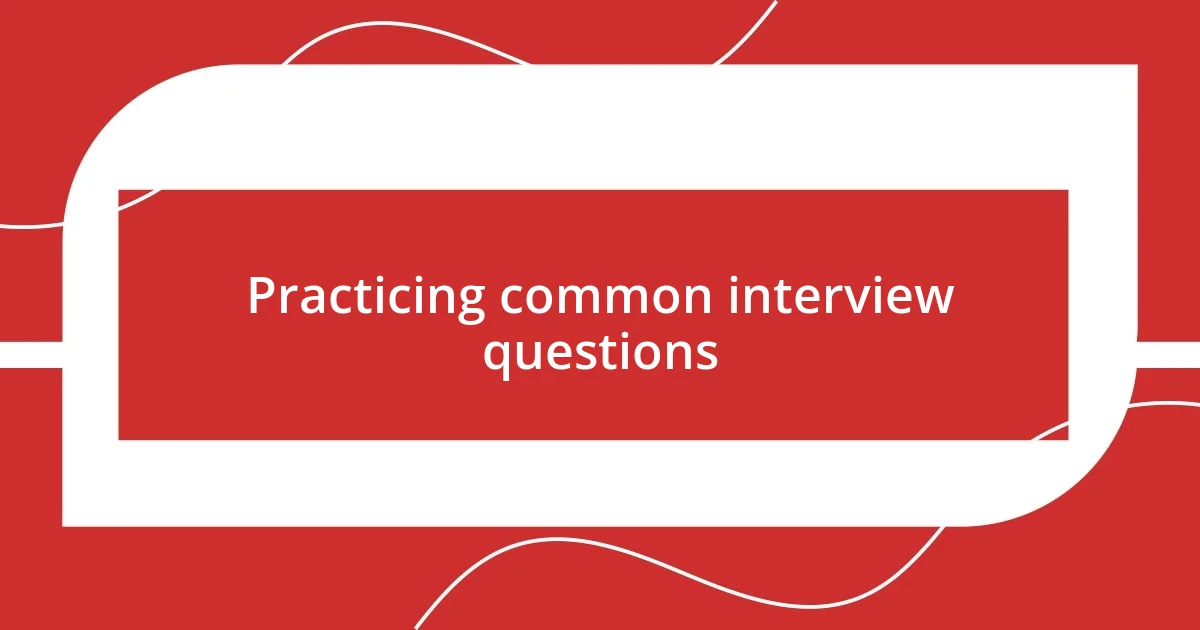
Practicing common interview questions
Practicing common interview questions has always been a crucial step for me as I prepare. I like to compile a list of frequently asked questions, such as “Tell me about yourself” and “What are your greatest strengths and weaknesses?” When I first started interviewing, I found that rehearsing my responses helped ease my anxiety and allowed me to present my skills more confidently. I remember sitting in front of my mirror, answering questions aloud—it felt a bit silly, but it truly helped me articulate my thoughts clearly.
One effective technique I’ve discovered is participating in mock interviews with friends or mentors. This approach not only gives me a chance to practice my answers but also allows for feedback on my delivery and body language. I recall one mock session where a friend pointed out that I tended to rush through my responses. After adjusting my pace, I felt more composed and engaged during my actual interviews. Engaging in this practice created a transformation. I became more self-aware and ultimately more effective in responding to unexpected questions.
To maximize my practice sessions, I often record myself answering interview questions. This might sound a bit unconventional, but it’s been a game changer for me. By reviewing my recordings, I can spot areas to improve, such as filler words or unclear explanations. It was enlightening when I noticed how often I said “um” in my responses—once I became aware of it, I consciously worked to eliminate those distractions. Combining these strategies helps me feel more prepared and confident as I approach each interview.
| Practice Method | Benefits |
|---|---|
| Rehearsing Alone | Builds confidence, clarifies thoughts |
| Mock Interviews | Receive feedback, practice body language |
| Recording Responses | Identify areas for improvement, increase self-awareness |
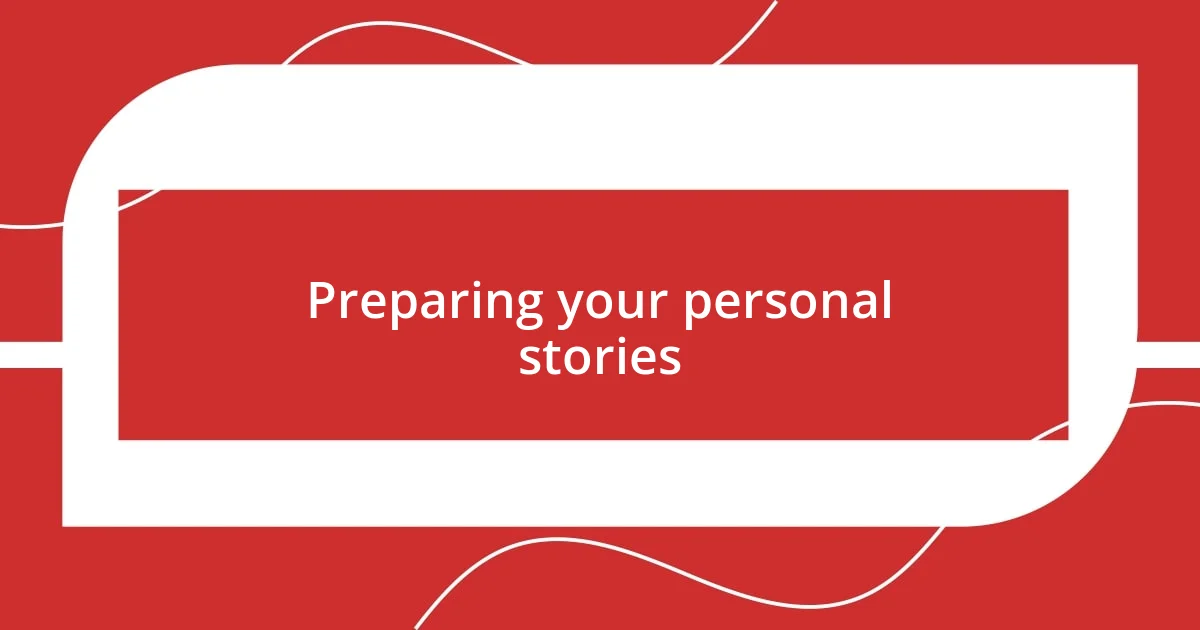
Preparing your personal stories
Preparing personal stories for job interviews has really shaped my approach to showcasing my experiences. When I think back to my own interviews, I realize how important it is to weave narratives that illustrate my skills and align with the company’s values. For instance, during one interview, I shared a story about a challenging project where I led a team to meet a tight deadline. Not only did it demonstrate my leadership abilities, but it also allowed me to connect with the interviewers on a more personal level when they related their own similar experiences.
As I prepare my stories, I always make sure to keep them concise while packing in the relevant details. I remember a time when I tried to share an experience that meandered too long; I could see the interviewer’s eyes glaze over! This taught me to stick to the “STAR” method—Situation, Task, Action, and Result. It’s a straightforward approach that keeps my narratives focused and impactful. Aren’t those vivid stories the ones that truly leave an impression? I find that by practicing these narratives aloud, they flow more naturally during the actual conversation, allowing me to engage the interviewer in a meaningful way.
Moreover, reflecting on my emotions during these stories adds depth. When I recall the stress and triumph from that team project I mentioned earlier, I also remember the satisfaction of overcoming obstacles together. Sharing that passion not only shows my dedication but sparks enthusiasm in the interviewers as well. It’s amazing how a genuine emotional connection can transform an interview from a mere formalities into a rich dialogue. Can you feel the difference that a heartfelt story can make?
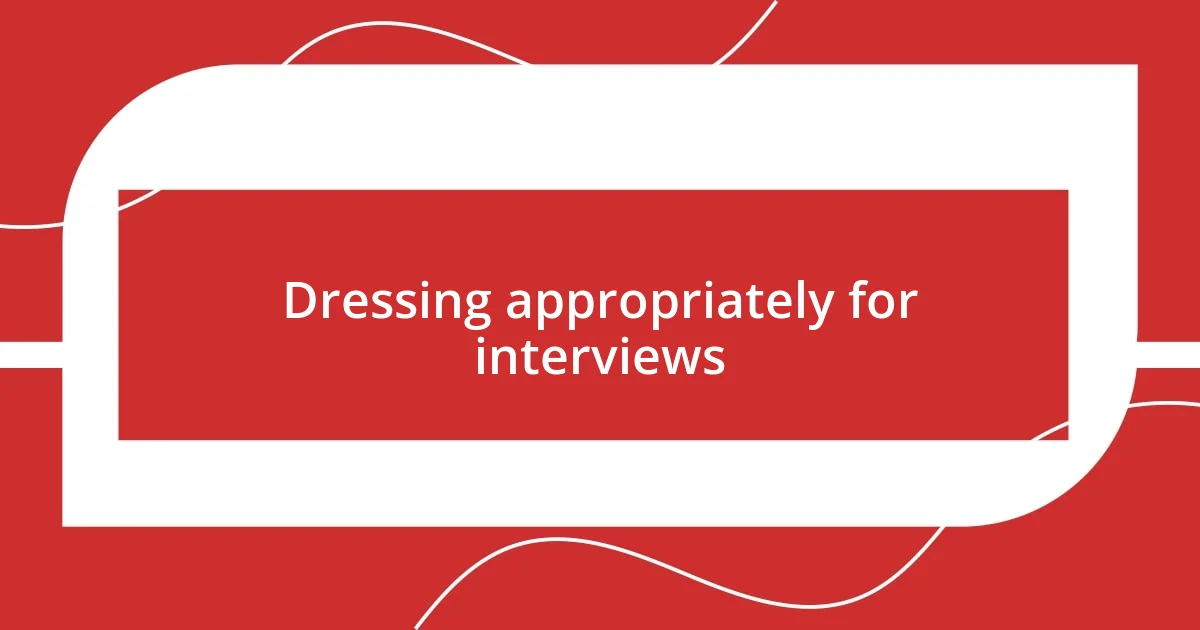
Dressing appropriately for interviews
Dressing appropriately for interviews has always struck me as a critical component of making a positive first impression. On one memorable occasion, I wore a tailored suit to a corporate interview. The moment I stepped into the room, I felt an immediate surge of confidence, like I was claiming my space. It’s fascinating how the right outfit can transform your mindset, isn’t it?
Another thing I’ve learned over the years is that dressing for the company culture matters just as much as looking professional. I remember walking into a startup dressed in business formal attire, only to notice most of my interviewers were sporting casual, relaxed outfits. It made me rethink my choice and adapt for future interviews. Understanding the company vibe helps you not just fit in but also lets the interviewers see your genuine interest in becoming part of their team.
Don’t underestimate the importance of grooming and personal hygiene either. I once arrived at an interview feeling great about my outfit but realized I hadn’t taken enough time to present myself neatly. A colleague candidly pointed out that my hair was slightly disheveled, which made a lasting impression on me. It taught me that even small details contribute to the overall picture—after all, isn’t hesitation about appearance something no candidate wants to amplify?
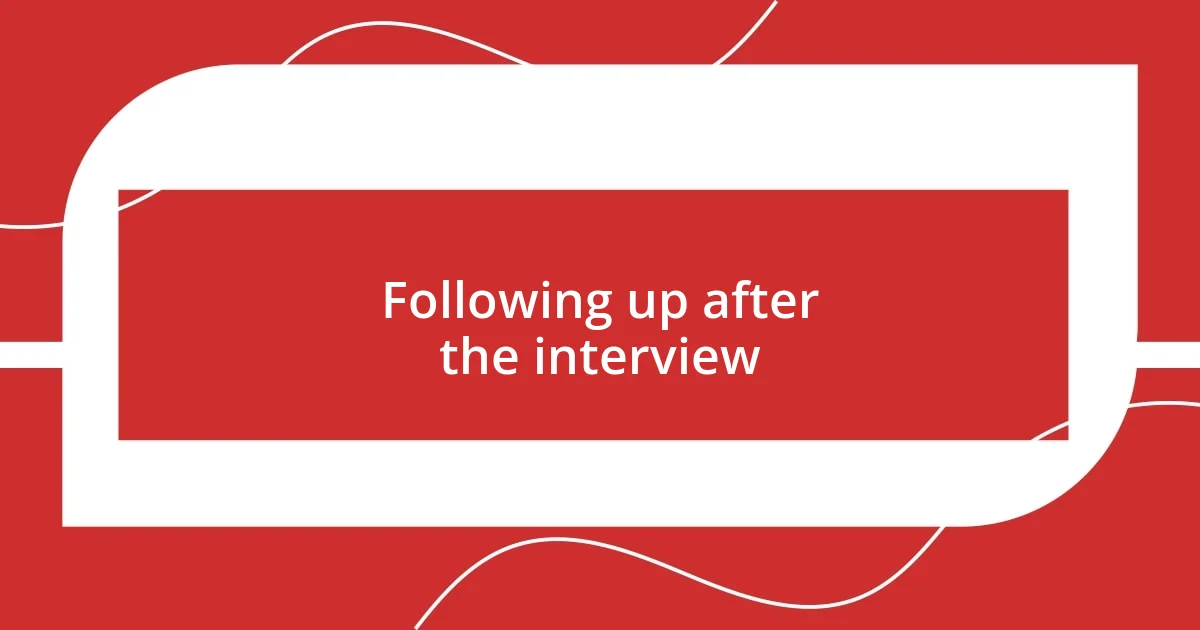
Following up after the interview
Following up after an interview is one of those steps that I used to overlook, but now I see it as an essential part of the process. I remember the first time I sent a thank-you email; it felt a bit awkward, but I soon understood its impact. I expressed my gratitude for the opportunity and briefly restated my excitement about the role. That simple gesture sparked a positive response from the hiring manager, which was a delightful surprise. Have you ever thought about how a short email can keep the conversation going?
I always try to follow up within 24 to 48 hours after the interview. I find it’s the perfect window to make a good impression while their memories of our interaction are still fresh. I once crafted a follow-up note that mentioned a particular point we discussed—something that seemed minor at the moment but directly reflected my interest in the job. This personal touch not only shows attentiveness but also reinforces my enthusiasm and commitment to the potential role.
It’s important to strike the right tone in your follow-up too. I remember feeling unsure if I should keep it formal or casual, but I ended up opting for a friendly tone that reflected my personality and fit the company’s culture. If you’re hesitant, just think about how you’d converse with a colleague; that mindset can truly guide your phrasing. Following up is not just about reiterating interest; it can set you apart and establish a rapport that makes you memorable. Who wouldn’t want to leave a lasting impression?








